The end of a decade: AMRI highlights
We have accomplished so much at the Australian Museum Research Institute. In the 2018-19 financial year, we discovered 203 new species and our scientists and associates have published 221 publications. AMRI brings together a team of 88 staff, including research scientists, collection scientists, collection officers and more than 100 associates, fellows and students in order to research and explore today’s major challenges.
What better way to celebrate the end of a decade, and the start of a new one, than recount just some of our highlights! Have a look below at some of our discoveries, achievements and collaborations. These are not in any particular order and are by no means a full list; for more information, please visit our webpage. Thank you to all of our scientists, volunteers, partners and collaborators - this next decade should hold even more exciting scientific endeavours.
Please click on the images for the information!
PROJECTS
From our Citizen Science projects to our Wildlife forensics facilities, the Australian Museum Research Institute has successfully launched a variety of flagship projects. AMRI have a suite of innovative and engaging projects that enable everyone to contribute to Australian science, and focus on modern challenges such as: climate change impacts on biodiversity; the detection and biology of pest species; and, understanding what constitutes and influences effective biodiversity conservation.
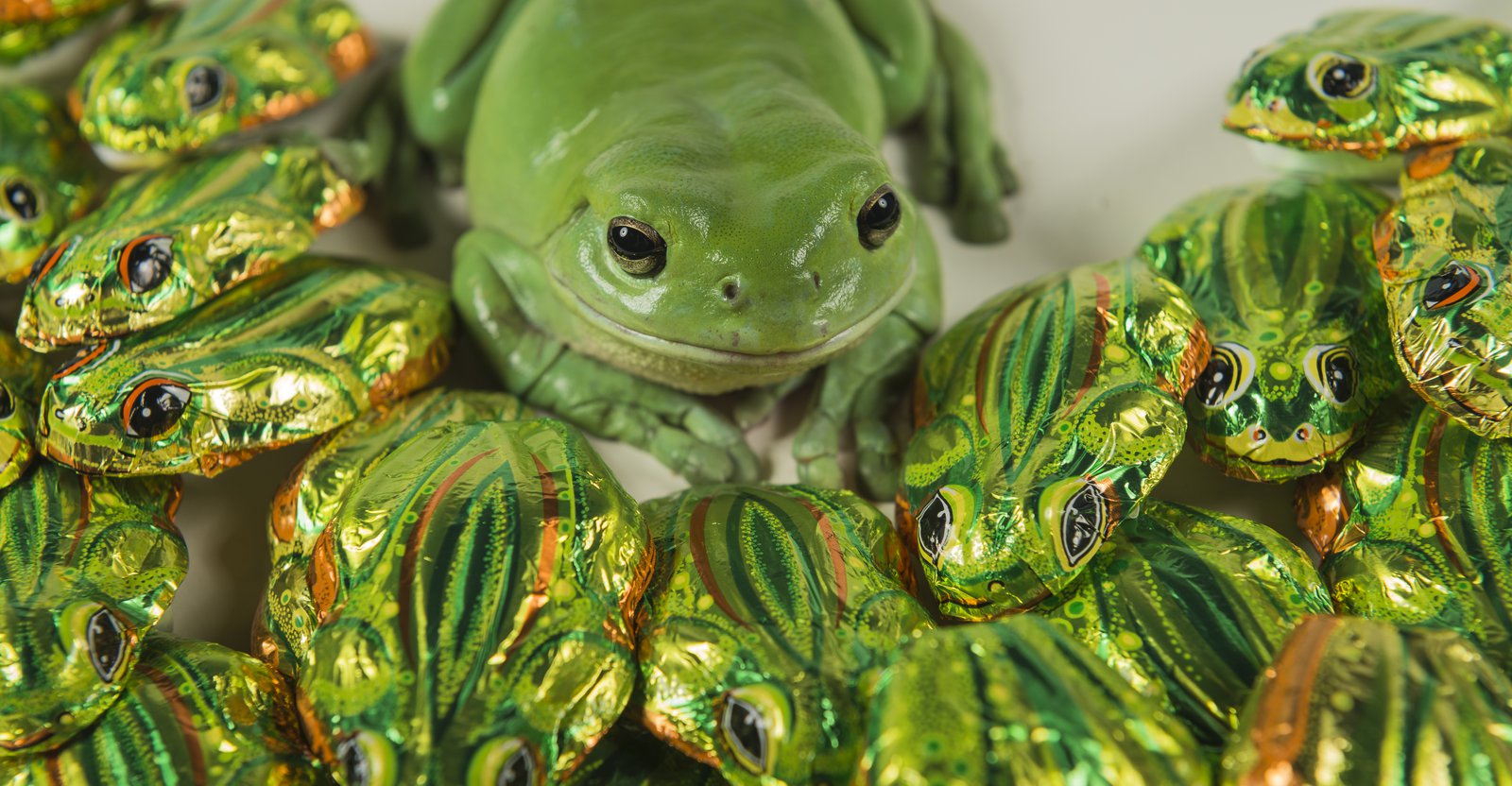
FrogID was launched in November 2017. In just over two years, the FrogID app has been downloaded over 100,000 times and more than 15,000 people have contributed data to the project. FrogID has now received over 90,000 recordings resulting in nearly 140,000 frog records, more than 20% of all frog records in the national biodiversity data aggregate, the Atlas of Living Australia. The project has resulted in one peer-reviewed scientific manuscript published (several others accepted and in review), one complete Honours thesis and numerous scientific presentations. In addition, FrogID was awarded a Green Globe Award in 2018 and the Eureka Prize for ‘Innovation in Citizen Science’, providing industry recognition for the project.
Image: Abram Powell© Australian Museum

After five years of pioneering collaborative research, the koala genome has been sequenced. Coming in at slightly larger than the human genome at 3.4 billion base pairs and with >20,000 genes, this genome has given us insights into koala biology, conservation and disease. In 2018, a significant publication in Nature Genetics came out about the project. Please see ACWG (below) for more information.
Image: Stuart Humphreys© Australian Museum

DigiVol is a world leader in utilising volunteers to transcribe data from our natural history collections. Created in 2011, DigiVol started with 4 volunteers and 2 photographic workstations. Now, there are 65 volunteers coming to the museum each week to image our collections in the DigiVol Lab and over 600,000 collection objects/specimens have been imaged and online. DigiVol Online has 4,788 citizen scientists, and 1.7 million tasks completed. Our leading volunteer has completed 430,000 transcriptions! As an example from one of our collections, digitisation of the Malacology collection over the last 10 years has added 214,306 new registration records to our system, which equates to about 1,178,683 mollusc specimens.
Image: Rhiannon Stephens© Australian Museum
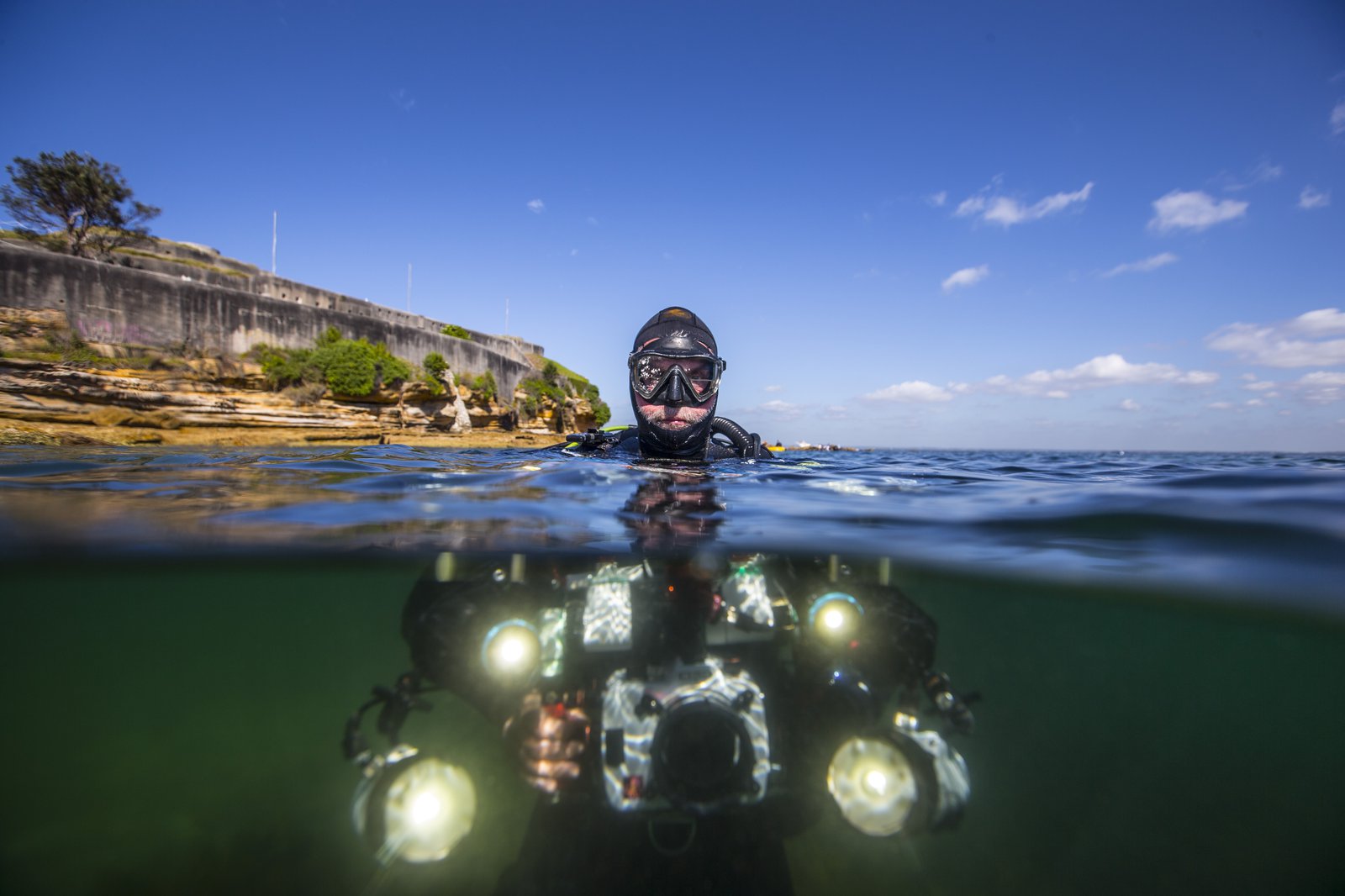
Upload images and identify your own observations of fishes from Australia and New Zealand! This project now has a total of 69,190 observations, with species 2,391 identified and 2,090 people involved.
Image: Dallas Kilponen© Australian Museum

Lizard Island Research Station (LIRS)
A world-leading supplier of on-reef facilities for coral reef research and education, LIRS was established in 1973 and hosts about 100 research projects each year, by more than 300 people. In 2019, LIRS supported 194 research personnel.
Image: Lizard Island PR© Australian Museum

Australian Centre for Wildlife Genomics (ACWG)
Founded by Professor Rebecca Johnson in 2012, the ACWG is primarily focused on ecological applications such as species identification, individualisation, conservation and small population management. Main projects of ACWG include the koala genome, wildlife forensics, aviation wildlife strike, maintaining and contributing to our extensive frozen tissue collection and captive and wild population management.
Image: Ian Bird© Australian Museum

The collection care and conservation team specialise in the preservation of archaeological and ethnographic objects, rare books, and archives, and biology and geology collections. From conserving Rover's legacy to the Lord Howe Island diorama conservation project, these projects are not only essential but can hold many surprises. Watch how the mysteries of Egyptian mummified human remains were revealed in 2018 here.
Image: Nick Langley© Australian Museum
Other projects not listed above include our genomics project to halt Australia’s extinction record (Oz Mammals Genomics), AMRI’s Icons project, a biosecurity identification service and more - please see our Science strategy for more information.
COLLECTION ACQUISITIONS AND EXHIBITION HIGHLIGHTS
The AMRI natural history collections underpin our research and are essential for our biodiversity research, and one of our main asserts is our use of wildlife genomics to solve key problems. We hold an incredible 19.5 million objects and specimens in our natural history collections and our research is underpinned by significant scientific infrastructure including the Australian Centre for Wildlife Genomics, the Australian Museum Research Library and the Lizard Island Research Station (situated on Australia’s Great Barrier Reef). The AMRI collection is the largest and most comprehensive in the southern hemisphere, and continues to serve the Australian and international research community. In the 2018-2019 financial year, a further 6,274 specimens were added to the natural science collections.
Donations, collections and exhibition highlights
- The Albert Chapman collection: a selection, 578 specimens, were installed as a visiting exhibition in the Australian Fossil and Mineral Museum in Bathurst, in 2019.
- Frozen tissue collection: our extensive collections are a valuable resource for the investigation of biodiversity, population genetics, phylogenetics and more. The ACWG manages and curates this collection, comprising of about 80,000 specimens.
- Canowindra fossil fish collection: in central-west NSW, about 300 km west of Sydney, is Canowindra. The Canowindra fossil fish site is a rich late Devonian site, with all fossils preserved on a single bedding plane, part of an ancient fish community trapped in a pool of water which dried up, killing them. The first slab of Canowindra fossil fish was uncovered in the 1950's, and now there are 245 slabs with 320 individual fish registered as scientifically published types specimens. Some fossils are on display at the Age of Fishes Museum, but all of the fossils are 3D scanned.
- In 2015, Dr Jackie Nguyen and UNSW colleagues excavated a near complete skull and neck vertebrae of a young Diprotodon from central NSW. This Diprotodon, which we nicknamed ‘Darren’ (Dazza to his mates), is now in the AM palaeontology collection. We developed a small exhibition about Darren the Diprotodon at the AM in 2017. Earlier in 2019, Darren toured the Australian Fossil and Mineral Museum in Bathurst.
- Donation of the goblin shark which has a YouTube video, garnering over 1.1 million views!
- Significant donation of mammal species from PNG (including three long-beaked echidnas plus diverse species from Bougainville and the Transfly Region).
- Acquisition of the Foster James Springsteen Collection (over 3,000 lots, the bulk being of international origin) and the E.N.Drier Collection, donated by the Museum of Vancouver in 2014 (approx. 3,000 lots of various taxa of Mollusca, the bulk of which were collected by Drier in Australia ~1930).
- Acquisition of a rare Crocoite gemstone from west coast of Tasmania in 2018.
- Donation of an unusual cassiterite (tin dioxide) crystals, from Pine Ridge, near Inverell, NSW.
- Donation of chalcopyrite crystals (copper, iron sulphide), from Olympic Dam, South Australia.
- Purchase of a large azurite (copper carbonate-hydroxide) disc in kaolinite, from Malbunka, N.T.
- Donation of a range of copper minerals from De Grussa Mine, W.A.
- Donation of 5 slices of iron meteorites from South American and African localities.
- Donation of a large range of very unusual smoky quartz crystals from Manuka, NSW.
- Purchase of large and unusual witherite (barium carbonate) crystals from Rosebery, Tasmania.
- Donation of marcasite crystal groups replaced by goethite (iron oxide-hydroxide), from the Farafra Oasis, White Desert, Egypt.
- Donation of the 32 kg Mossgiel stony meteorite from near Hay NSW, as a Cultural Gifts Scheme donation.
- Mineral Treasure specimens and a Broken Hill mineral display installed in the Westpac Long Gallery.
DISCOVERIES, INCLUDING NEW SPECIES
AMRI is a leading institution in scientific discovery. We discover and document the biodiversity of our backyards and beyond, identify potentially environmentally and economically devastating pests, and use molecular techniques (DNA) to solve wildlife forensic mysteries and to understand the origins of Australia’s unique fauna. And part of new discoveries, includes the discovery of new species! New species described in the 2018-2019 year included a reef spider crab (Schizophroida sp.) from the western Pacific, a fossil bristlebird (Walter’s Bristlebird – Dasyornis walterbolesi) and a scincid lizard (Epibator insularis) from l’Île Walpole, New Caledonia. These discoveries are linked with AMRI expeditions (below) so be sure to read further.

During mineral research at the Jenolan Caves, Ross Pogson discovered some new occurrences for rare cave minerals including: a mineral called Woodhouseite (calcium, aluminium sulfate-phosphate hydrate), previously known from a limestone cave system in China, making Jenolan Caves the second world occurrence of this mineral in a limestone cave system. And: a mineral called Kingsmountite (calcium, manganese, iron aluminium phosphate hydroxide) making Jenolan Caves only the second known world occurrence of this mineral in a limestone cave system, outside of Mexico.
Image: Ellie Downing© Australian Museum
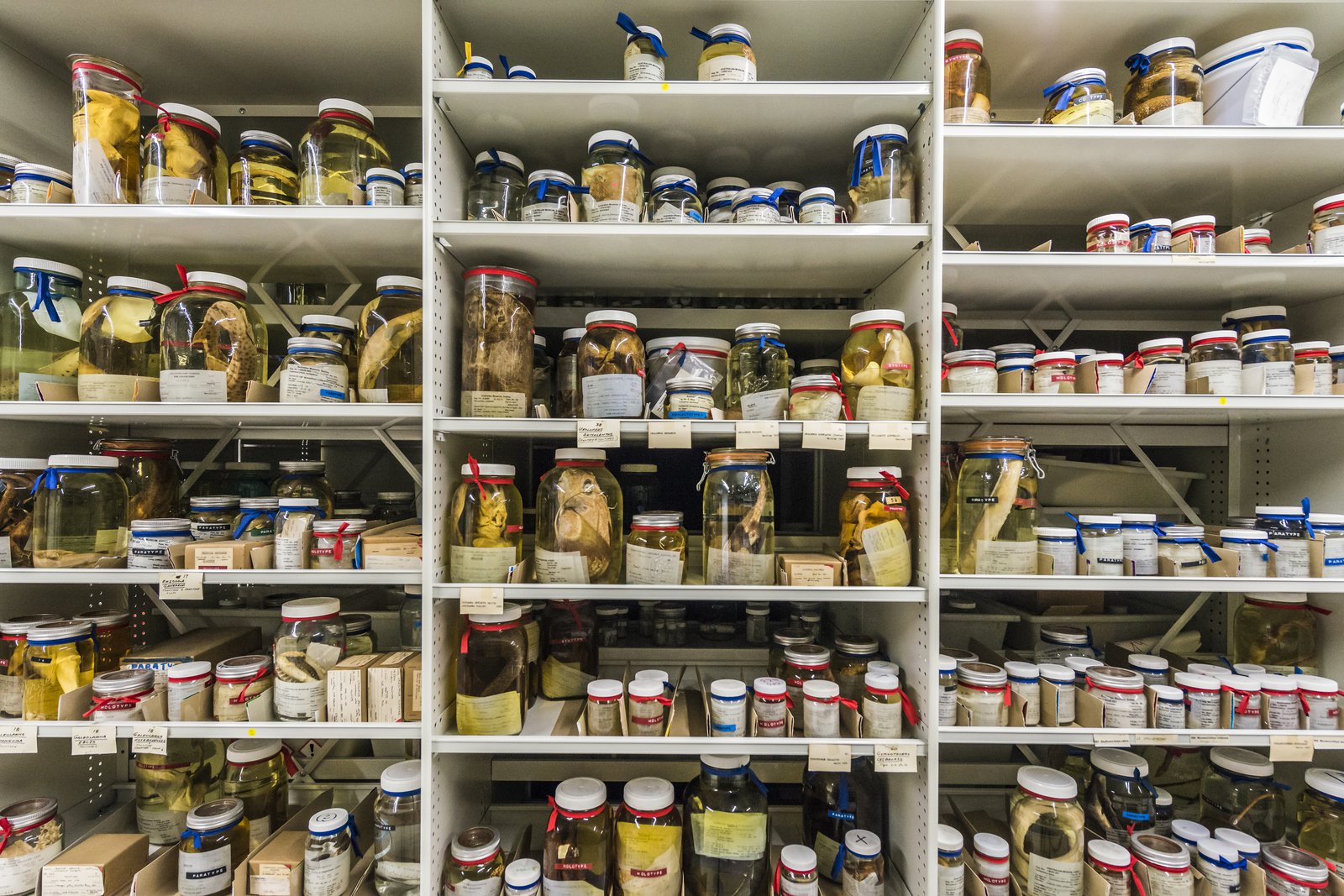
AMRI fish researchers: In the past decade, AMRI fish researchers have lead the way in revealing the remarkable behavioural capabilities of the tiny larvae of marine fishes, and in the process, overturned the traditional paradigm that fish larvae drift passively in the currents from where they were spawned to where they leave open water and settle into their nursery habitat. We now know that the larvae have a great deal of control about where they disperse during their pelagic sojourn, and this has enabled accurate modelling and predictions of how marine parks and reserves contribute to fisheries outside their borders, and over what spatial scales fisheries should be managed.
Image: Abram Powell© Australian Museum

Between 2010 and 2013 Australian Museum scientists studied land snails from the Western Australian Kimberley and the adjacent Victoria River District in the Northern Territory and discovered about 150 new species in the process. The work highlighted the Kimberley as one of the hottest hotspots for Australian land snails, but also uncovered that several species may be threatened by the spread of exotic grasses and their impact on changed fire regimes in the Top End.
Image: Vince Kessner© Vince Kessner

Phylogeographic investigations of more than 20 species of gastropods and bivalves from marine and estuarine habitats in south eastern Australia have significantly contributed to establishing a general framework for understanding evolutionary sustainability in the region. This framework is essential for directing responses targeted at ameliorating the effects of climate change, especially in the crunch zones between biogeographical provinces at the Peronian/Maugean and Peronian and Maugean/Flindersian boundaries.
Image: Melissa Graf© Australian Museum

A number of expeditions to South-East Asia resulted in the discovery of 28 new species! The 'Helen's flying frog' being one of them, pictured here - named after the mother of our own amphibian biologist, Dr Jodi Rowley, who waslead author on the study. Read more about amphibian conservation in South-East Asia and the new species: https://australian.museum/blog/amri-news/two-new-horned-frog-species-found-on-vietnams-highest-peak/
Image: Jodi Rowley© Australian Museum

Dr Jackie Nguyen has contributed to the annual numbers of new species described at the AM. These include 5 new species and 2 new genera of fossil birds, all of which are the world’s oldest records of their respective bird families. Read more about the extinct species of bristlebird, discovered in 18-million-year-old rocks in Norther Queensland.
Image: Nick Langley© Australian Museum

In the world of marsupials, further highlights include: the newly recognised rock-wallaby species in Northern Australia, the newly recognised tree-kangaroo species (three) in New Guinea and solving the evolutionary relationships of enigmatic marsupial moles (pictured).
Image: Greta Frankham© Australian Museum
EXPEDITIONS
AMRI has been at the centre of many expeditions that have contributed to the vast and unique collections at the Museum, and have consequently contributed to Australian and international scientific research. AM collections have been enhanced though the collection of specimens through expeditions to the South West Pacific, Kermadec Islands, Scotia Arc, Southern French Polynesia, Lord Howe Island, Timor-Leste, the Solomon Islands, Australia and more. Learn how our scientists have researched and explored these unique locations, and collaborated with these communities. For more information, please go to: https://australian.museum/learn/expeditions/
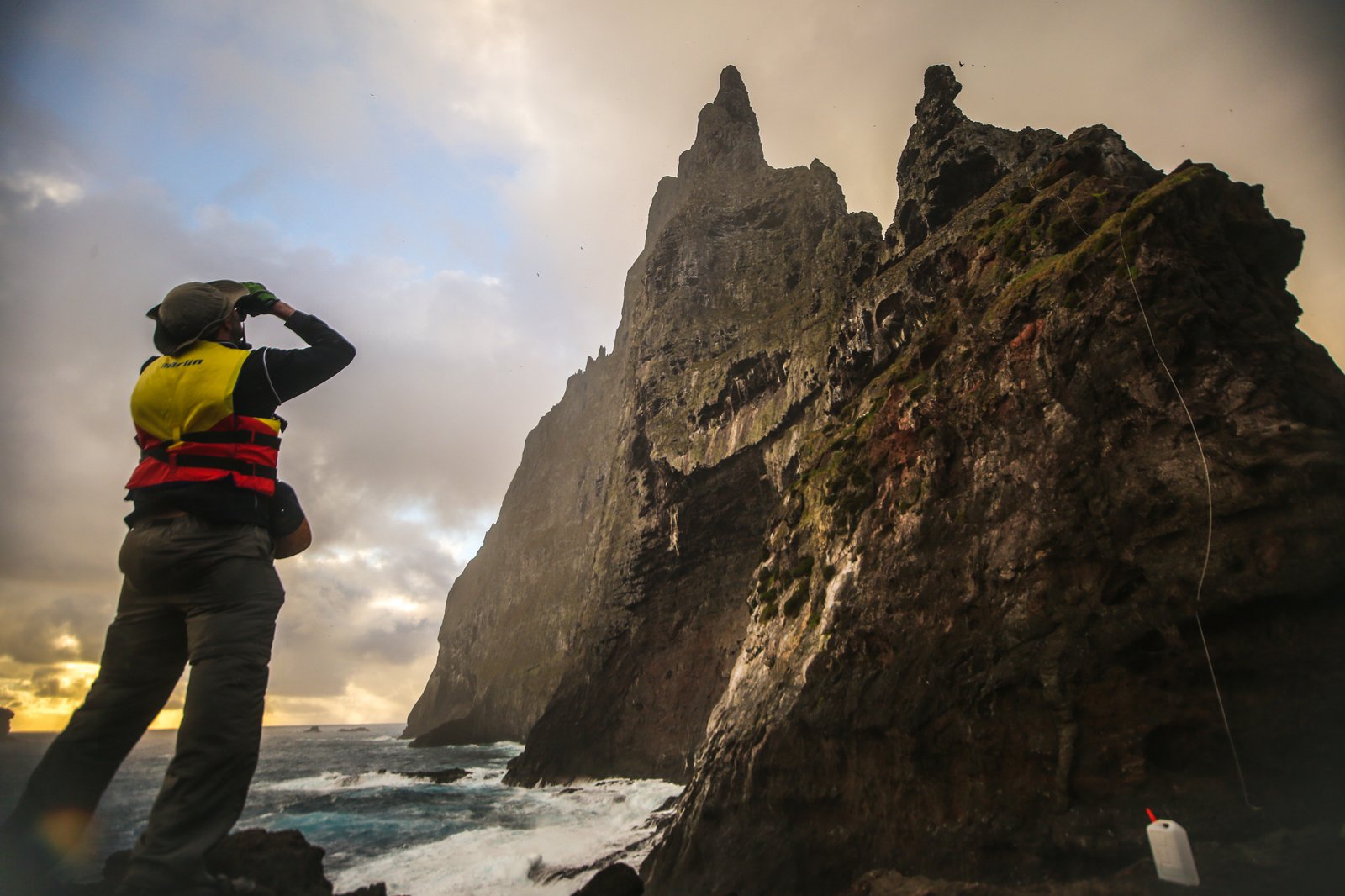
Expedition to Lord Howe Island and Balls Pyramid Expedition
Australian Museum scientists have been surveying Lord Howe Island and the water around it since 1851, documenting introduced invertebrates, new species (introduced or native) and exploring fauna. Just one amazing discovery, was that of whale bones on the island. Lord Howe Island harbours an amazing diversity of endemic land snails, some of which are threatened by extinction. In 2019, after more than 10 years in the planning, a rat eradication project was implemented, which promises to remove rats from the island, which are arguably the most existential threat to the island’s endemic land snail species. In concert with the eradication project, AM scientists have monitored land snail populations on the island to assess the short and medium term effects on the land snails.
In addition to this research, one expedition at Lord Howe Island included Balls Pyramid. Read how a seasoned climber in 2017 experienced the world’s tallest volcanic stack : https://australian.museum/blog/science/climbing-balls-pyramid/
Image: Tom Bannigan© Australian Museum

Expeditions to Solomon Islands
The expeditions to the Solomon Islands secured project funding in 2016. Since 2016, AM scientists have studied the elusive monkey-faced bats, giant rats, snails, moths, birds and frogs of the Solomon Islands Archipelago. Working with the Kwaio community on the island of Malaita, new heights were reached in 2019 with the publication of two scientific papers by Kwaio and AM scientists. In 2018, the ornithology expedition recorded 58 species of resident landbird, and their research showcases Malaita's unique bird fauna, including the islands first record of the elusive Solomon's Nightjar! In 2019, a team of AMRI staff travelled to three villages in East Kwaio (Kwainaa'si, Kafarum and Aifasu) to survey for beetles, snails and moths and the results are being processed.
Image: Paul Flemons© Australian Museum

Joint Expeditions
A number of joint expeditions have been underway in the past decade. These include the Kermadec Islands Expedition in 2011 (a joint expedition with Auckland Museum; with Stephen Keable & Many Reid) and the South-West Pacific Expedition in 2017 (joint expedition with Auckland Museum; with Stephen Keable, Elena Kupriyanova & Many Reid) where the biodiversity of these regions were recorded.
The expedition on the CSIRO's research vessel, the RV ‘Investigator’enabled scientific teams, including AMRI Marine Invertebrate and Malacology research staff, to undertake deep sea sampling off eastern and southern Australia. As a result, a new deep-sea worm was discovered in 2017!
Image: Mark McGrouther© Mark McGrouther

In central western NSW, Coolah Tops is an island of tall open forest in cleared agricultural land – an island in the sky. In 2018, the AM teams sampled 14 different mammals and 9 reptile species, detected 42 species of bird, collected 35 fishes and samples from 41 birds, and assisted with ongoing taxonomic and biogeographical research.
Image: Richard Major© Australian Museum
JOINT APPOINTMENTS AND AWARDS
At the Australian Museum Research Institute, we are extremely thankful to the amazing and talented people that are a part of AMRI. AMRI is dedicated to building a better future through partnerships, joint appointments, our volunteers, interns, work experience students and more. It is also important to celebrate all of those people who make AMRI what it is today, and to honour the astounding scientists and contributors in Australia.
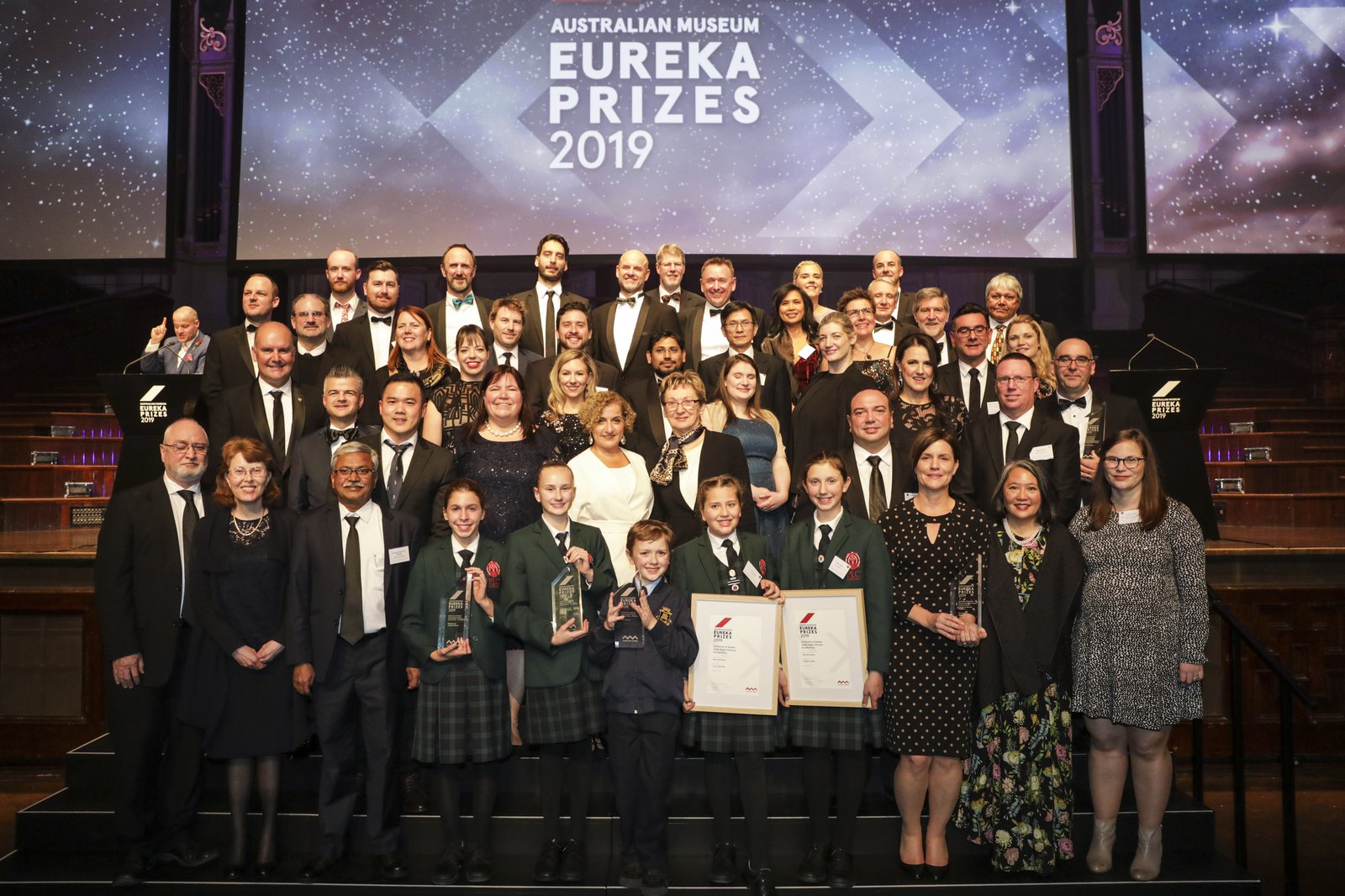
The Australian Museum Eureka Prizes
The Australian Museum Eureka Prizes are the country’s most comprehensive national science awards, and honour excellence across the areas of research and innovation, leadership, science engagement and school science. Established in 1990, it is a unique co-operative partnership between government, education and research institutions, private sector companies, organisations and individuals. Each prize is judged by a panel of eminent and qualified individuals whose contribution of expertise and time helps support the credibility of the Eureka Prizes. In 2019, 17 prizes were awarded across four categories – Research & Innovation, Leadership, Science Engagement and School Science.
Image: Salty Dingo© Salty Dingo
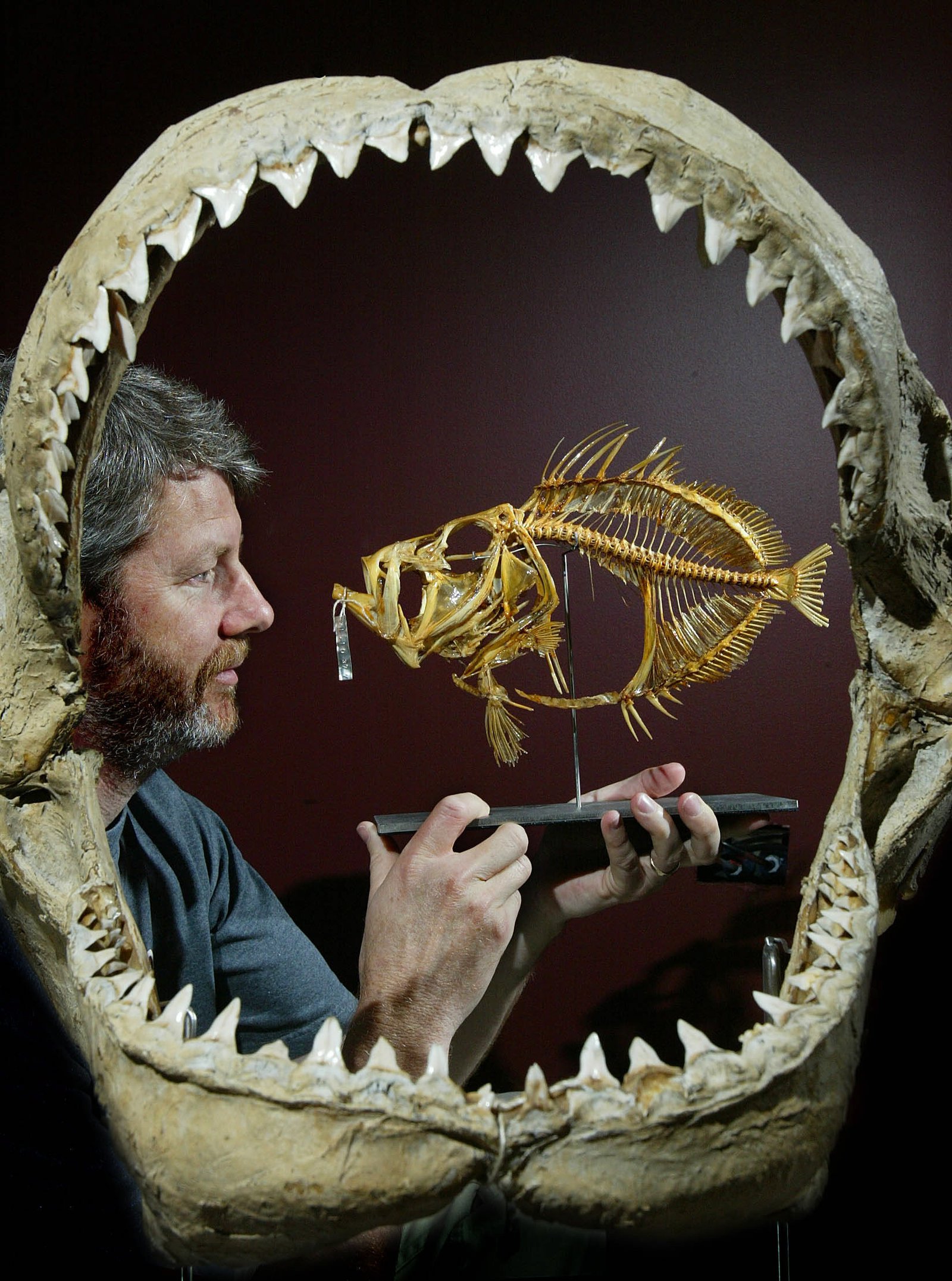
AMRI Medal winners
The AMRI medal is presented to an individual staff member, senior fellow or team from the Australian Museum for outstanding science and communication of their research outcomes. The AMRI medal is awarded at the Eureka Prizes. In 2019, senior fellow Mark McGrouther (pictured) was awarded the AMRI medal, after retiring from the helm after 25 years. Mark McGrouther was recognised for his outstanding work managing, developing and improving the AM’s Ichthyology Collection, the largest of its kind in the southern hemisphere, over the last 30 years. In 2016, Mark launched the Australasian Fishes project, enabling citizen scientists to upload, identify, and comment on observations of Australian and New Zealand fishes
Image: R. pearce© R. pearce

AMRI Lifetime Achievement Award
The AMRI Lifetime Achievement award was established to recognise eminent researchers and science communications who have made an outstanding contribution to science and biodiversity conservation; previous winners have been Professor Tim Flannery, Robyn Williams AM and ex-AM Director Professor Frank Talbot. In 2019, the AMRI Lifetime Achievement award was given to ecologist Professor Lesley Hughes for her work on climate change – read the full transcript of her acceptance speech here: https://australian.museum/blog-archive/amri-news/pioneering-australian-ecologist-wins-2019-australian-museum-research-institute-lifetime-achievement-award/
Image: Unknown© Australian Museum

AMRI Joint curator appointments with Universities
This program commenced in 2015 with AMRI’s first joint appointments with UNSW (Amphibian conservation biologist and Palaeontologist), followed by our joint ichthyology curator position (with Curtin University) and most recently a joint archaeology curator position with University of Sydney was created.
Image: Abram Powell© Australian Museum
These are just some of our highlights here from AMRI, but let's not forget one of our biggest achievements - the creation of AMRI in 2014!
We have more exciting things planned which will be announced this year, in 2020 – so be sure to keep an eye out on our webpage and subscribe to the AMRI newsletter! All of these wonderful achievements are part of our Science Strategy (2017-2021), so please read further.
Meagan Warwick, AMRI & External Partnerships Coordinator, Australian Museum Research Institute







